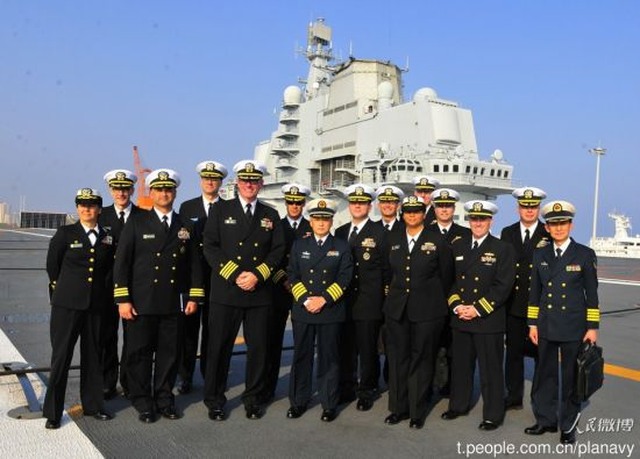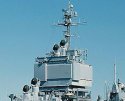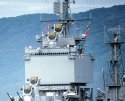Comparing both models, the Enterprise's island is by no means "small". It's only "small" relative to the overall size of the carrier. While Liaoning's island is indeed longer, it's also much narrower. Enterprise's structure seems taller as well.
Enterprise' island is of a unique design, dictated by the desire to fit 4 of the huge, heavy and ultimately unsuccessful vacuum tube electronics passively steered phased array radar panels. That's why it's shaped like a cube. These billboard radar antennas were removed from the superstructure sides during the 1980 refit, but the basic cube shape of the superstructure remained.
Liaoning/Kuznetsov's island is shaped by the fact that Soviet Union wanted not a pure carrier but a missile cruiser / carrier hybrid, with both offensive and defensive missile firepower, plus the shipboard anti-submarine sensors and electronic support capabilities on par with the Kirov class battlecruiser. So it had to carry the vast array of top hamper typical of any Soviet cruiser.
In addition, the Kuznetsov was also designed to carry the Skyward, which was intended to be the Soviet equivalent to the Aegis system, but whose size and weight more resembled the size and weight to those which Enterprise carried 25 years before the Kuznetsov.
In short, It needed an island as big as those of the Enterprise to carry a radar system as enormous,
plus it needs all the room required to accommodate almost as much top hamper as a Kirov class battlecruiser on top of that. That's why it's island is so enormous.
As it turns out, the massive Soviet Sky guard phased array radar system, intended to rival the Aegis system, failed as miserably as the the distant Aegis ancester which the Enterprise was built with 25 years before.
The Chinese actively steered phase array panels currently on the Liaoning is very small compared to the soviet system whose space they occupy. Also, the Chinese didn't try to make the ship do double duty as a missile cruiser. That's the Liaoning's Soviet bequeathed superstructure looks so ridiculously oversized on the Chinese carrier.
I have no doubt the island on the first indigenous Chinese carrier will owe almost nothing to the island on the Liaoning. The chinese requirement is totally different. The soviet design requirement that produced such a huge island is totally inapplicable to Chinese design intentions. Besides, look at the current generation of Chinese surface combatants. They all have relatively low slung and compact superstructures. Chinese designers are not into big top heavy superstructures the way Soviet designers had been. So I bet when the first indigenous Chinese carrier is completed, its island would be tiny next to Liaoning, and would look much more like the islands on an American carrier.















